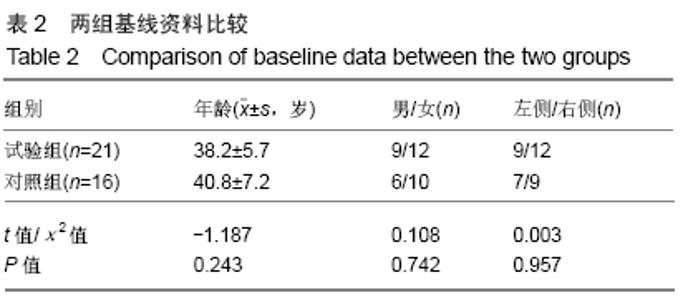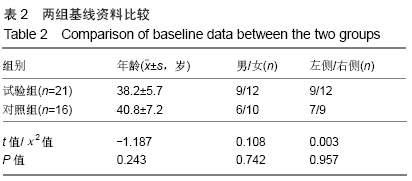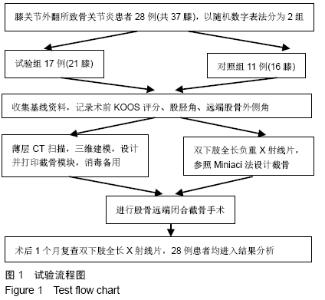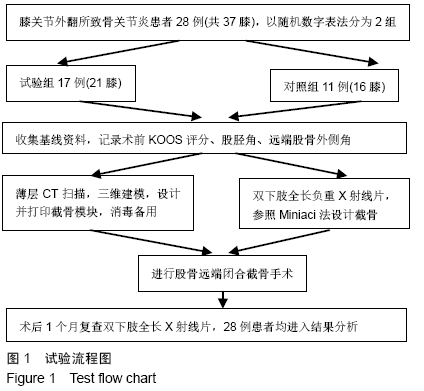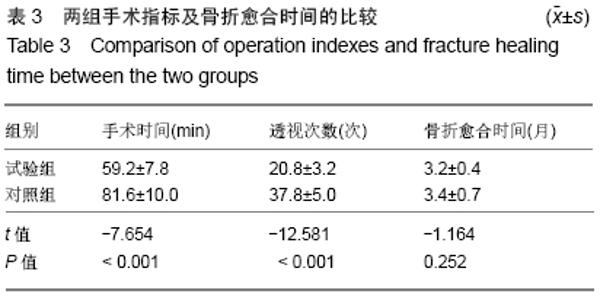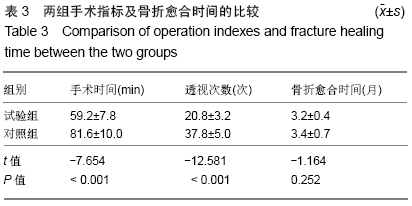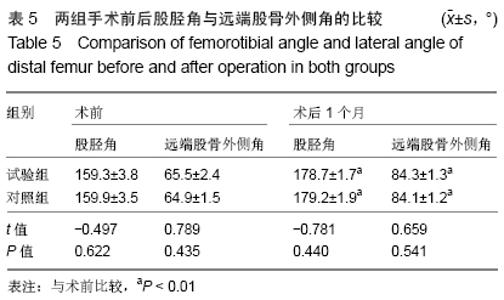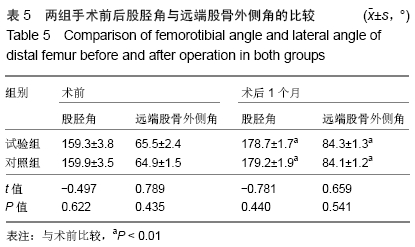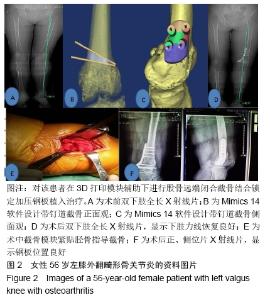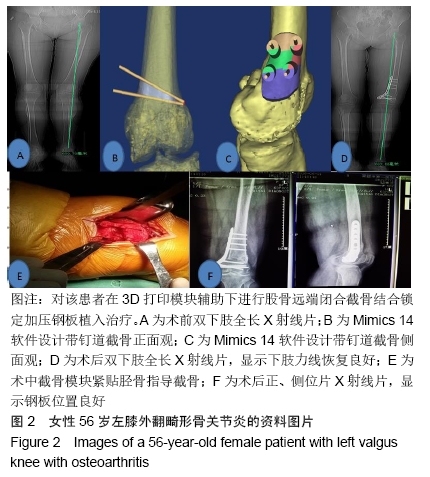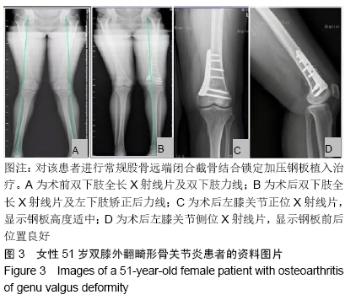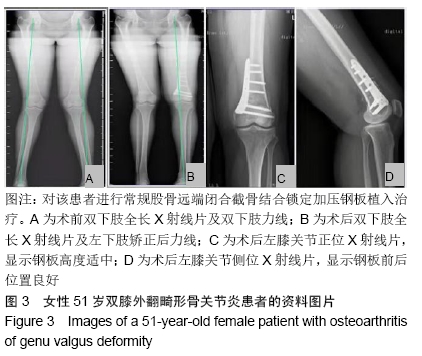[1] SHARMA L, SONG J, FELSON DT, et al. The role of knee alignment indisease progression and functional decline in knee osteoarthritis. JAMA.2001;286(2):188-195.
[2] FREILING D, LOBENHOFFER P, STAUBLI AE, et al. Medial closed-wedgevarus osteotomy of the distal femur. Arthroskopie.2008; 21(1):6-14.
[3] COVENTRY MB, ILSTRUP DM, WALLRICHS SL. Proximal tibial osteotomy:acritical long-term study of eighty-seven cases.J Bone Joint Surg(Am).1993;75(2):196-201.
[4] MIROUSE G, DUBORY A, ROUBINEAU F, et al. Failure of high tibial varus osteotomy for lateral tibio-femoral osteoarthritis with<10° of valgus : outcomes in 19 patients. Orthop Traumatol Surg Res.2017; 103(6):953-958.
[5] NHA KW, HA Y, OH S, et al. Surgical treatment with closing-wedge distal femoral osteotomy for recurrent patellar dislocation with genu valgum.Am J Sports Men. 2018;46(7):1632-1640.
[6] VAN HEERWAARDEN R, WYMENGA A, FREILING D, et al. Distal medialclosed wedge varus femur osteotomy stabilized with the tomofix platefixator.Oper Tech Orthop. 2007;17(1):12-21.
[7] SABBAG OD, WOODMASS JM, WU IT, et al. Medial closing-wedge distal femoral osteotomy with medial patellofemoral ligament imbrication for genu valgum with lateral patellar instability.Arthrosc Tech. 2017;6(6):e2085-e2091.
[8] JACOBI M, WAHL P, BOUAICHA S, et al. Distal femoral varus osteotomy:problems associated with the lateral open-wedge technique. ArchOrthop Trauma Surg.2011;131(6):725-728.
[9] INZANA JA, OLVERA D, FULLER SM, et al. 3D printing of compositecalcium phosphate and collagen scaffolds for bone regeneration. Biomaterials.2014;35(13):4026-4034.
[10] SCHWEIZER A, FURNSTAHL P, NAGY L. Three-dimensional correction ofdistal radius intra-articular malunions using patient-specific drillguides.J Hand Surg (Am). 2013;38(12):2339-2347.
[11] 陈国仙,李国山,林宗锦,等.3D打印技术辅助股骨远端截骨术治疗膝外翻畸形骨关节炎的疗效观察[J].中国修复重建外科杂志, 2017,31(2): 134-138.
[12] MINIACI A, BALLMER FT, BALLMER PM, et al. Proximal tibialo steotomy.A new fixation device.Clin Orthop Relat Res. 1989;(246): 250-259.
[13] 黄野,及松洁,杜辉,等.锁定钢板固定的股骨髁上不全截骨技术治疗膝外翻[J].中国骨与关节杂志,2014,3(7):531-535.
[14] SARAGAGLIA D, BLAYSAT M, INMAN D, et al. Outcome of openingwedge high tibial osteotomy augmented with a Biosorb ® wedge andfixed with a plate and screws in 124 patients with a mean of tenyears follow-up.Int Orthop. 2011;35(8):1151-1156.
[15] BODE G, VON HEYDEN J, PESTKA J, et al. Prospective 5-yearsurvival rate data following open-wedge valgus high tibial osteotomy. Knee Surg Sports Traumatol Arthrosc. 2015;23(7): 1949-1955.
[16] EDGERTON BC, MARIANI EM, MORREY BF. Distal femoral varusosteotomy for painful enu valgum.A five-to-11-year follow-up study.Clin Orthop Relat Res. 1993;288(288):263-269.
[17] MATHEWS J, COBB AG, RICHARDSON S, et al.Distal femoralosteotomy for lateral compartment osteoarthritis of the knee.Orthopedics.1998;21(4):437-440.
[18] VAN HEERWAARDEN R, NAJFELD M, BRINKMAN M, et al. Wedgevolume and osteotomy surface depend on surgical technique fordistal femoral osteotomy.Knee Surg Sports Traumatol Arthrosc.2013; 21(1):206-212.
[19] BRINKMAN JM, HURSCHLER C, STAUBLI AE, et al. Axial and torsionalstability of an improved single-plane and a new bi-plane osteotomytechnique for supracondylar femur osteotomies.Knee SurgSports Traumatol Arthrosc. 2011;19(7):1090-1098.
[20] BAE DK, SONG SJ, KIM KI, et al. Mid-term survival analysis of closed wedge high tibial osteotomy: A comparative study of computer- assisted and conventional techniques.Knee. 2016;23(2): 283-288.
[21] KAZEMI SM, MINAEI R, SAFDARI F, et al. Supracondylar osteotomy in valgus knee: angle blade plate versus locking compression plate. Arch Bone Jt Surg.2016;4(1):29-34.
[22] FORKEL P, ACHTNICH A, METZLAFF S, et al. Midterm results following medial closed wedge distal femoral osteotomy stabilized with a lockinginternal fixation device.Knee SurgSports Traumatol Arthrosc. 2015;23(7):2061-2067.
[23] BROUWER RW, JAKMA TS, BIERMA-ZEINSTRA SM, et al. The whole legradiograph:standing versus supine for determining axial alignment. Acta Orthop Scand. 2003;74(5):565-568.
[24] GOLDHAHN S, TAKEUCHI R, NAKAMURA N, et al. Responsivenessof the knee injury and osteoarthritis outcome score (KOOS)and the Oxford knee score (OKS) in Japanese patients withhigh tibial osteotomy.J Orthop Sci. 2017;22(5):862-867.
[25] ROSSI MJ, LUBOWITZ JH, GUTTMANN D. Development and validation of the international knee documentation committee subjective knee form.Am J Sports Med.2002;30(1):152.
[26] WON SH, LEE YK, HA YC, et al. Improving pre-operative planningfor complex total hip replacement with a Rapid Prototype modelenabling surgical simulation.Bone Joint J. 2013;95-B(11):1458-1463.
|
